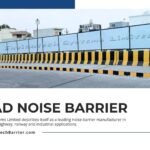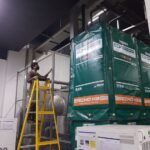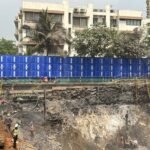![]()
Choosing the Right Temporary Noise Barrier for Your Project
Construction Sites, industrial facilities, and outdoor events often generate high levels of noise that can be disruptive to workers, neighboring communities, or event attendees. To mitigate this noise pollution, Temporary Noise Barriers play a pivotal role. However, with various options available, selecting the right temporary noise barrier for your project can be a complex decision. In this guide, we’ll help you navigate through the considerations and make an informed choice.
Understanding Your Project Needs:
Before diving into the world of temporary noise barriers, it’s essential to have a clear grasp of your project’s specific requirements. Consider the following factors:
- Noise Levels: Assess the noise levels at your site. Is it constant, intermittent, or fluctuating? Understanding the noise profile is crucial for determining the appropriate barrier.
- Project Type: Identify the nature of your project. Is it a construction site, an industrial facility, or an outdoor event venue? Different projects may have unique noise sources and challenges.
- Environmental Conditions: Take into account the weather and environmental conditions at your project location. Will the barrier be exposed to extreme heat, cold, rain, or wind? This information helps determine the barrier’s durability.
- Regulatory Compliance: Research local noise regulations and ensure that the selected barrier will enable you to comply with these regulations.
Types of Temporary Noise Barriers:
- Curtain Barriers: Curtain barriers are highly versatile and portable. They are ideal for construction sites and events where noise sources may change locations frequently. These barriers can be quickly installed and adjusted as needed.
- Portable Barriers: Portable noise barriers are designed for easy transport and deployment. They are commonly used in roadwork and maintenance projects. Portability and convenience are their key features.
- Acoustic Blankets: Acoustic blankets offer flexibility and adaptability. They are often used in indoor applications, such as minimizing noise in workshops or factories. Their sound-absorbing properties make them effective in confined spaces.
Selecting the Right Barrier:
- Noise Reduction Capacity: Each type of barrier has different noise reduction capabilities. Ensure that the chosen barrier can effectively reduce the specific noise levels in your project area.
- Portability and Installation: Consider how quickly and easily the barrier can be installed and relocated if necessary. This is especially important for projects with changing noise sources.
- Durability: Evaluate the durability of the barrier material in relation to the environmental conditions at your site. Some barriers are designed to withstand harsh weather conditions.
- Cost-Effectiveness: Assess the overall cost of the barrier, including installation and maintenance. Choose a solution that aligns with your budget constraints.
- Regulatory Compliance: Ensure that the selected barrier meets or exceeds local noise regulations to avoid potential legal issues.
Conclusion:
Selecting the right temporary noise barrier for your project is essential to ensure effective noise reduction while considering project-specific needs and compliance requirements. By carefully evaluating your project’s unique conditions and noise profile, you can make an informed decision that promotes a quieter and more productive work environment.
For expert guidance on temporary noise barriers and assistance in choosing the right one for your project, contact Envirotech Systems Limited today. We’re dedicated to helping you achieve your noise reduction goals efficiently and effectively.




